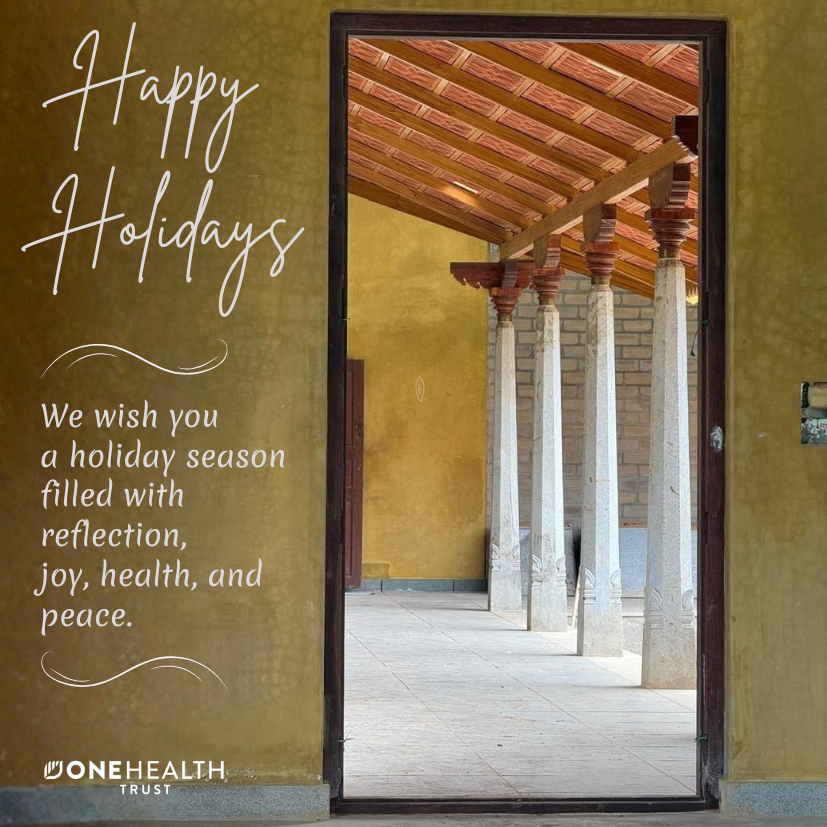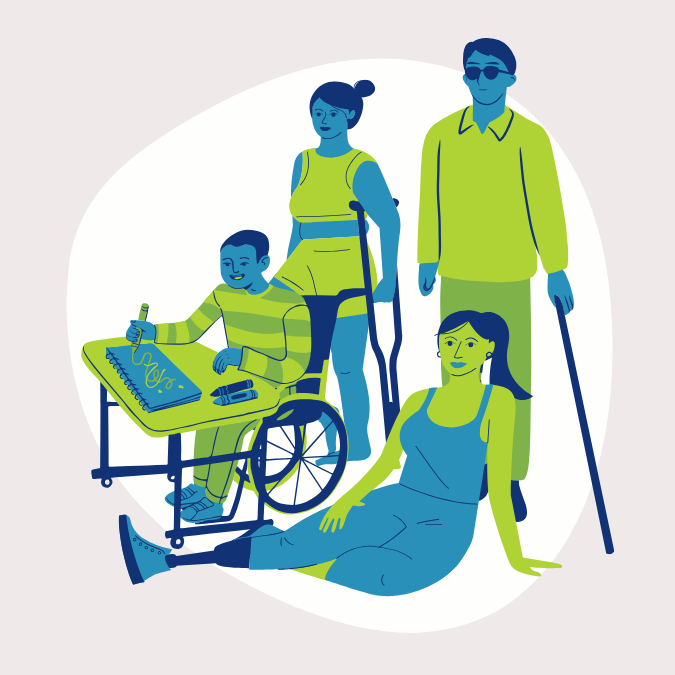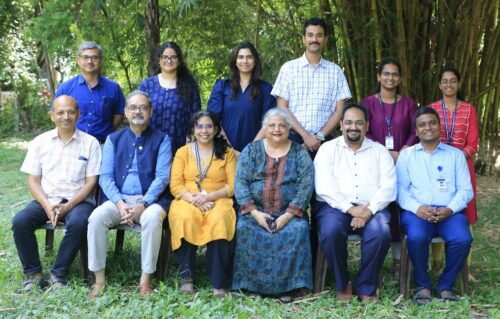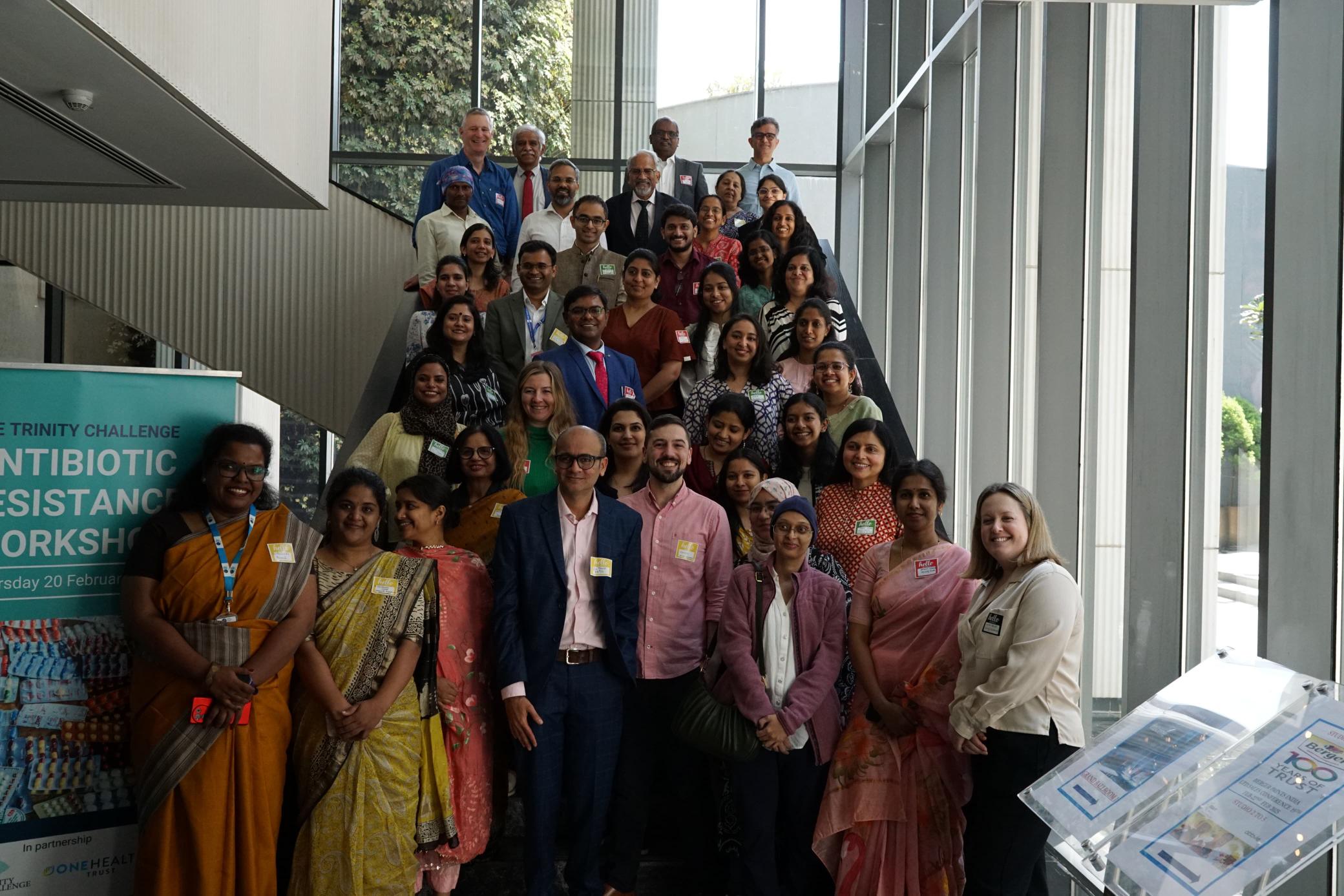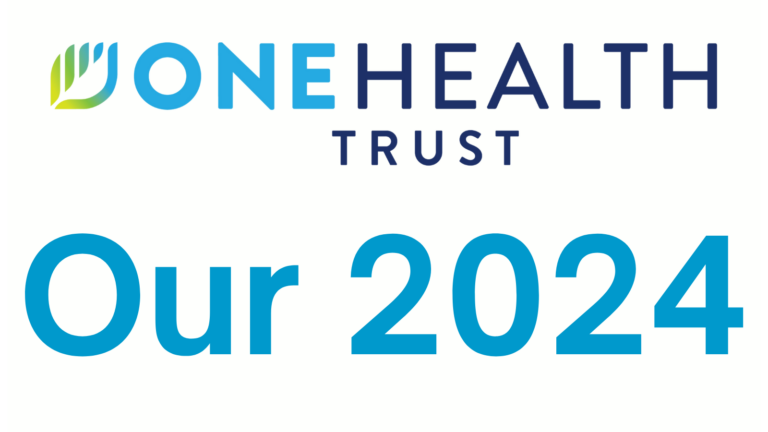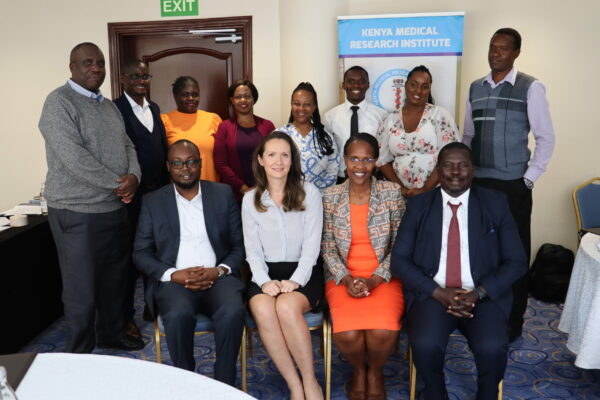October 05, 2023

On a day when Bengaluru traffic is relatively forgiving, a 2.5-hour northbound drive from the city office of the One Health Trust will take you to Guluru community health center (pictured above) in the Bagepalli taluk* of Karnataka’s Chikkaballapur district — the designated meeting point for everyone to begin the fieldwork for this year’s fellowship program with Merck Sharp & Dohme (MSD). The 2023 Merck Richard T. Clark Fellowship for Global Health, MSD Fellowship for short, involves a project to study levels of household or indoor air pollution in rural Karnataka, India, and its correlations with women’s respiratory health.
When compared with men, the respiratory health of women and children has been found to be disproportionately affected in households that use unclean sources of fuel (such as wood, coal, grass, or animal dung), both in India and other low- and middle-income countries. Our study, hence, focuses on women as respondents because women and children tend to spend more time at home than men, putting them at higher risk for the negative health effects of cooking with unclean fuels.
For this three-month project, three employees of MSD work with researchers at the One Health Trust and program officers at the Public Health Technologies Trust (OHT’s partner organization in several projects) to design the study, conduct field surveys, analyze survey results, and eventually present findings. The meeting at the Guluru community health center marked the beginning of a week-long pilot study in mid-August 2023, where OHT researchers along with our MSD partners in this study branched out and traveled through several regions of Chikkaballapur. We also had the crucial assistance of local study enumerators, who are officials employed for the duration of the fieldwork to help us conduct surveys on the ground and collect necessary data. This pilot exercise, arranged in the week of the MSD Fellows’s visit to India, kicked off a one-month fieldwork phase of this project that is scheduled to be completed by the end of October 2023.
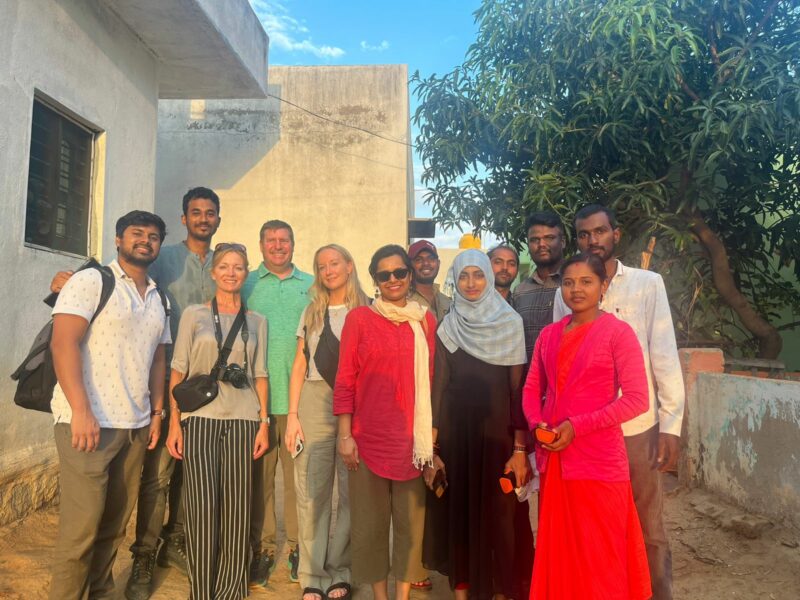
This year’s MSD Fellowship involves three collaborators from MSD: Christopher Baer (Associate Director, Global Safety and Environment with Merck & Co., Inc.), Dr. Janet Raddatz (Senior Director, U.S. Medical Affairs with Merck & Co., Inc.), and Charlotte O’Halloran (Associate Director, U.K. Medical Affairs with Merck Sharp & Dohme Corp). From OHT, Dr. Deepshikha Batheja (Fellow), Dr. Giridara Gopal (Postdoctoral Fellow), Abhik Banerji (Senior Research Analyst), and I (Senior Research Analyst, Rishiraj Bhagawati) joined them and five survey enumerators in the field for the pilot stage.
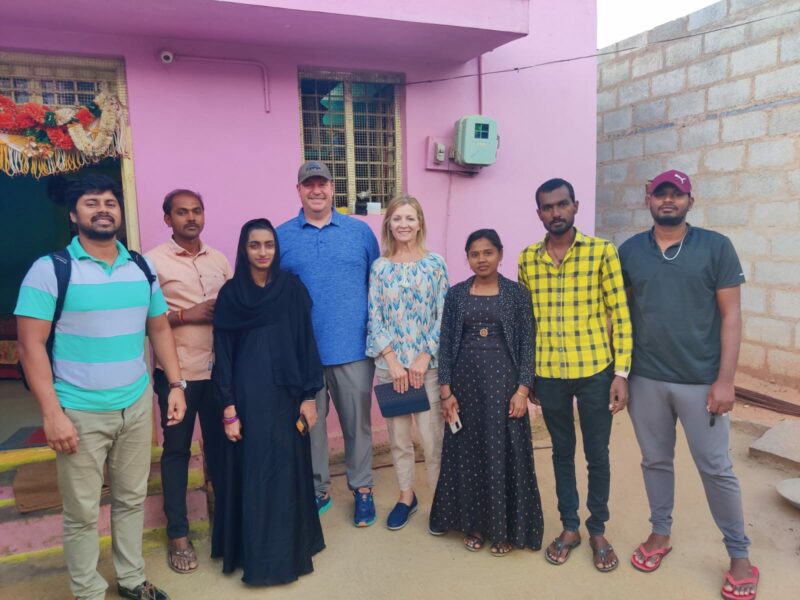
To help conduct the pilot, six enumerators joined us in this study: (from left to right) Manjunath C., Sumera S., Meghashree T.V., Srinivasa N., Rajesh N., and Banu Prakash N.T. (not in picture). Having grown up in the Chikkaballapur district where the study is being conducted, the enumerators know the region well and are critical not only in helping us test the surveys but also in introducing us to a diverse set of respondents in the villages.
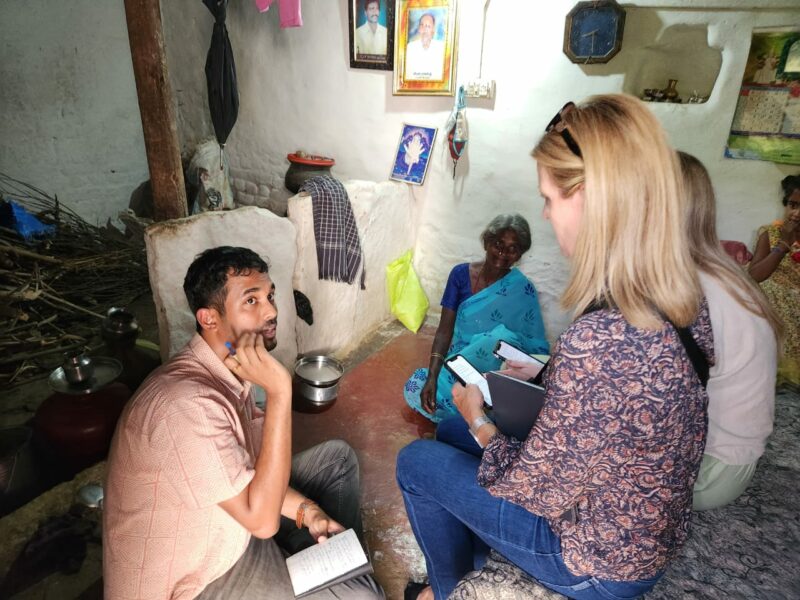
On the first day of the pilot, we didn’t use any of the survey tools we had designed, but instead we spent the day learning about the area of study in more detail. We talked to residents of Guluru to gain a sense of important factors such as the proportion of people who use unclean fuel (primarily firewood) for cooking, willingness to self-report respiratory illnesses, and the general comfort (or lack thereof) around addressing issues of indoor air pollution.
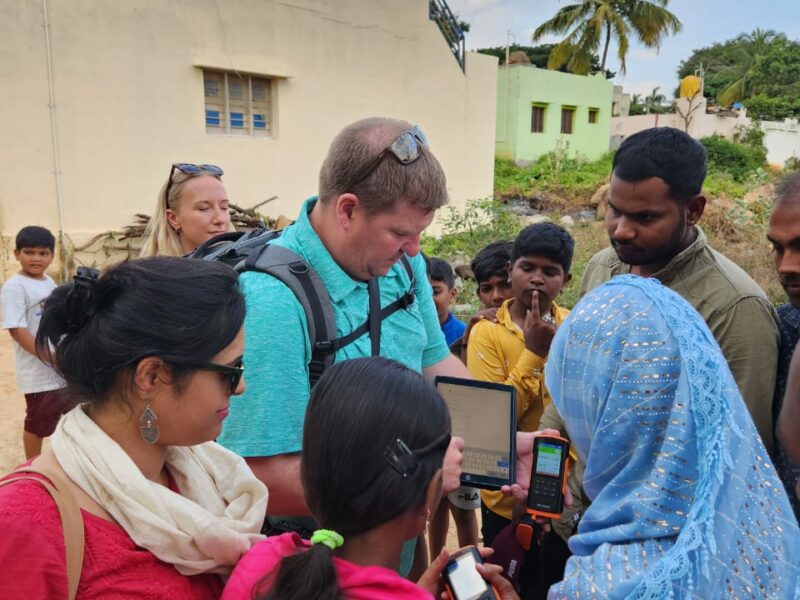
On the next day, we set out to the field with the survey tools we required for the study. Much like a television show, we like to call this stage of the study a pilot because we are still testing several of the study tools. From the validity and strength of survey questions to the ease of use of devices involved in data collection, lessons learned from the pilot help make the main stage of the study go more smoothly and help us find the best way to gather data ethically and efficiently. Here, Christopher is showing enumerators how air quality monitor readings should be documented.

We are using digital air quality monitors in this study because they can provide accurate air quality information during activities like cooking. The device lets us calculate the air quality index of a household or outdoor setting, and the presence of fine particles in the air such as PM 2.5 and PM 10, to indicate the components of the air being inhaled by people in that setting. Household air pollution is the leading cause of environmental exposure-related deaths globally, causing a high burden of non-communicable diseases including stroke, chronic obstructive pulmonary disease, and lung cancer. Respiratory illnesses associated with household air pollution from the use of traditional cooking fuels caused the premature death of approximately 4.9 million people globally and 2.3 million people in India in 2019, with higher mortality and morbidity rates among women and young children.
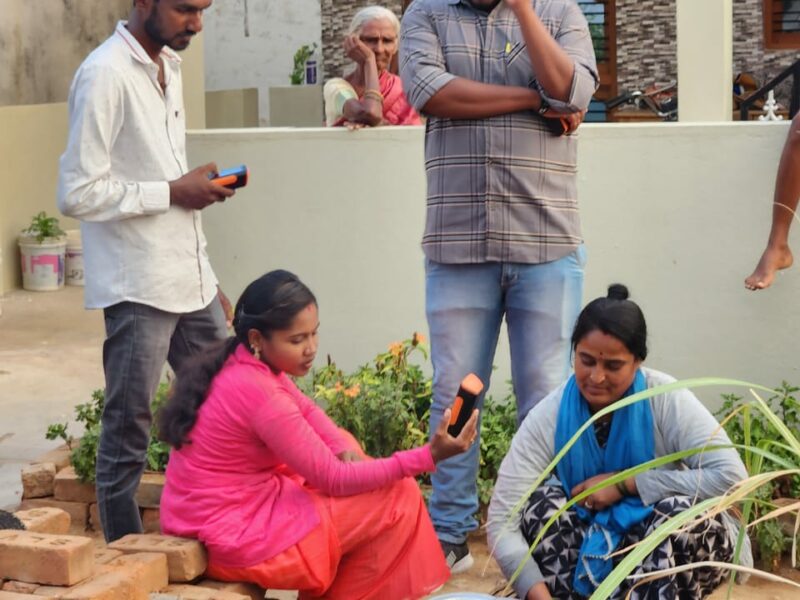
Once the basics of using these monitors were shown, the enumerators tried their hands at using them themselves, and documented air quality data while meals were being cooked. The primary cause of household air pollution is the use of open fires or traditional stoves fueled by kerosene, biomass (wood, animal dung, and crop waste), and coal – cooking technologies that are still used by around three billion households across the world. Real-time air monitoring data recorded while study participants cooked in their homes for their families revealed concentrations of breathable particulate matter ranging from 500 to 2,000 µg/m³ during cooking in biomass-using households in India, far exceeding the U.S. Environmental Protection Agency’s threshold of 150 µg/m³ for particles less than 10 microns as a 24-hour average and the Indian Central Pollution Control Board’s threshold of 100 µg/m³ for the same.
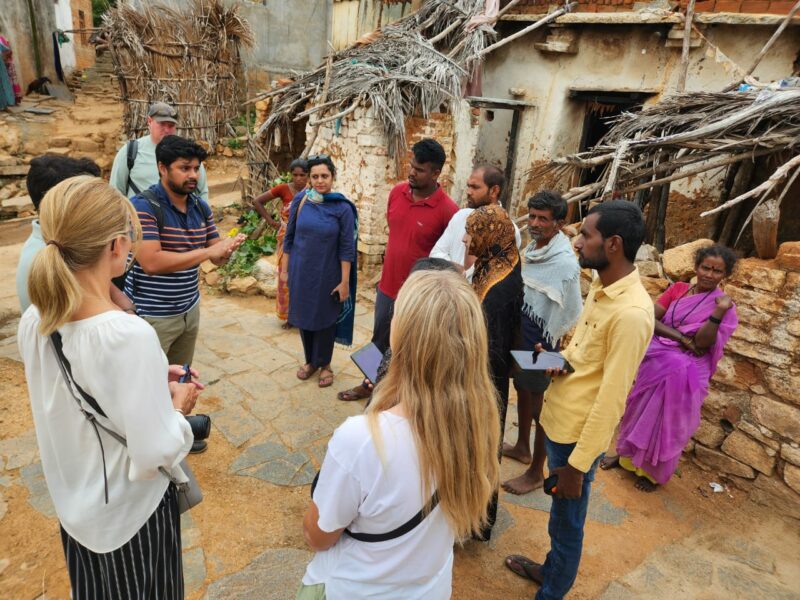
Beyond documenting air quality during cooking, enumerators also completed a quantitative survey with each respondent on electronic tablets during the main stage of the study. Here, Abhik instructed the surveyors about what to do and keep in mind during that stage of data collection. The survey included questions on time spent in the kitchen, self-reported respiratory symptoms, cooking fuel used in the house, ventilation in the kitchen, respondents’ disease history, disease history of children under five years of age, and more. In addition to these tools, peak flow meters** are used to estimate the association between women’s respiratory health and exact measures of household air pollution.
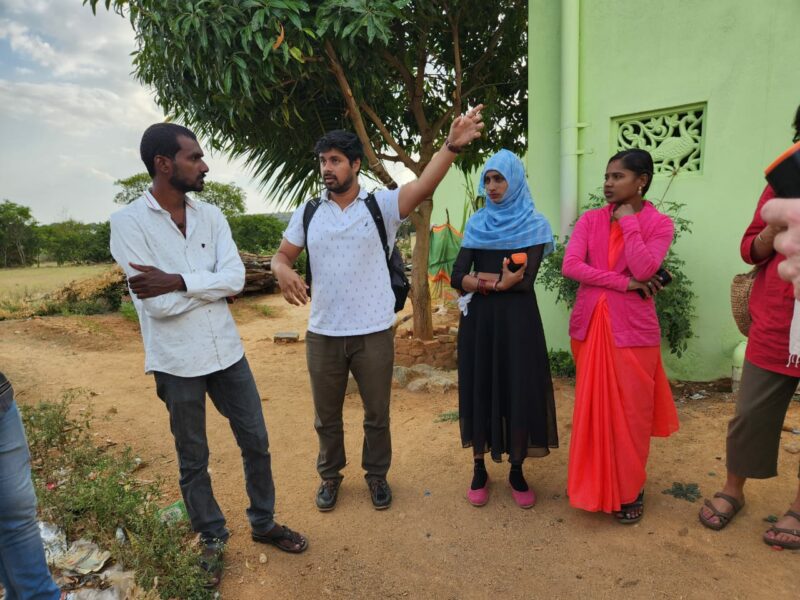
Although there is existing literature on household air pollution, no study in India has simultaneously examined the respiratory functions of women exposed to unclean air in kitchens and real-time air pollution levels in a way that might help us understand the incidence of chronic obstructive pulmonary disease (diseases that cause airflow blockage and breathing-related issues) among the population. We plan to conduct the study with a sample of 1,000 women, which gives us enough scope to detect any significant associations. The study has a big enough sample size to also do a case-control analysis to compare households that use clean fuel and unclean fuel.
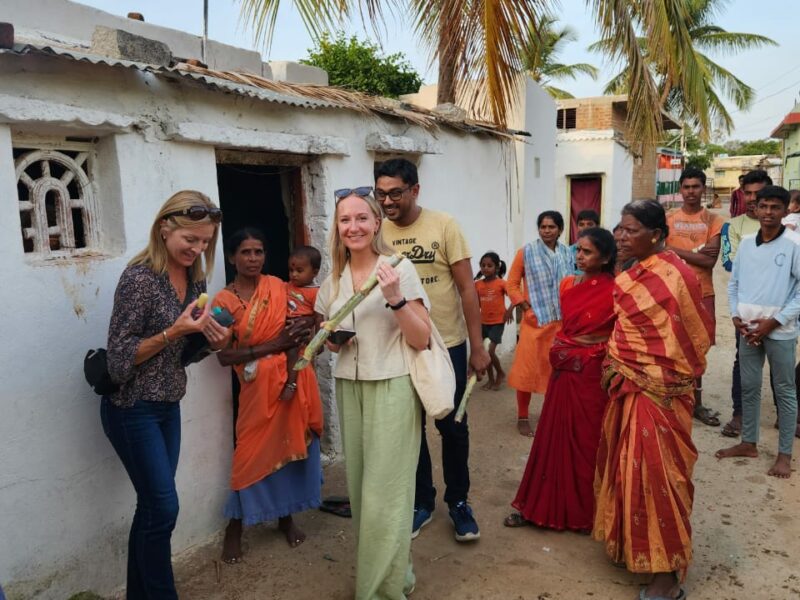
Naturally, with a group as big as ours, we attracted the attention of the community members in the neighborhood where we went while we tried to train the local enumerators to conduct the surveys. This led to several interesting interactions too, as we explained what we were trying to do to the curious friends and neighbors of the respondents.
Beyond training enumerators on conducting fieldwork efficiently and finding ways to improve the survey questions, the week was also an enriching experience in learning about the culture of the people in the region. Here, Janet, Charlotte, and Giri prepare to leave a household after an hour of discussion. Charlotte was presented with sugarcane from a neighboring farm.
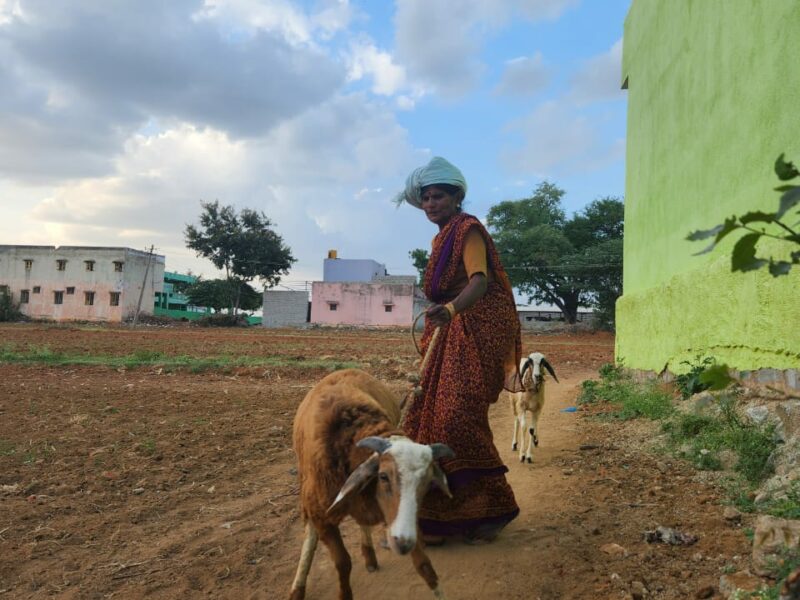
To capture air quality for this project, we conducted all surveys around the mealtimes of the respondents. Conducting the surveys around mealtimes meant we were in the field either early in the morning or just before sunset, as most residents in these villages cook meals only twice a day. In the villages of Chikkaballapur, as in most villages, these are times of intense activity as animals are either taken to or brought back from grazing fields and agricultural farms.
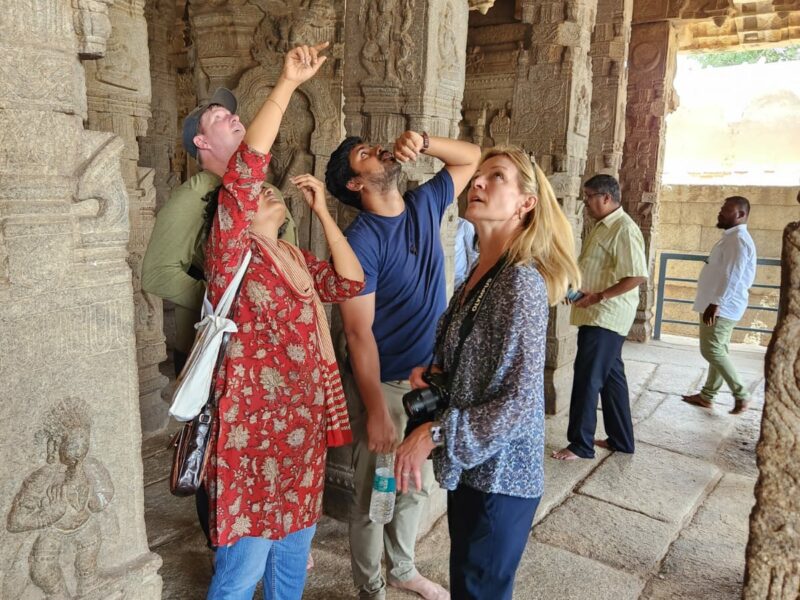
The fieldwork week included more than research. The MSD fellows, along with Abhik and I, took time out to visit a few places of historical and cultural importance in the area. Pictured above, a guide showed us the ceiling art of the Lepakshi temple, built in the 16th century.
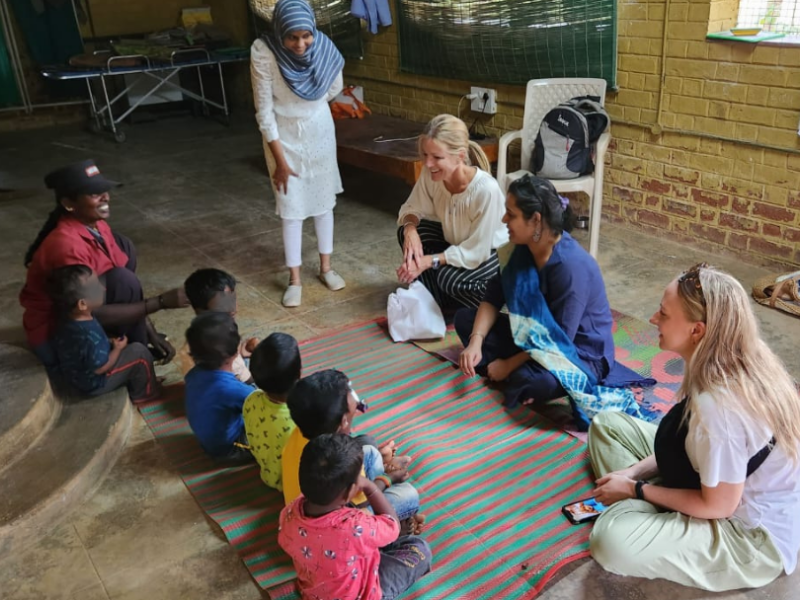
With the OHT campus at Nimai Valley under construction in the same district as our area of study, the team made a short visit to the site on one of the field days. We met the children of the construction workers who are building the campus, where a program for basic education and daily nutrition is run. Janet, Deepshikha, and Charlotte are seen here sharing a moment with the children.
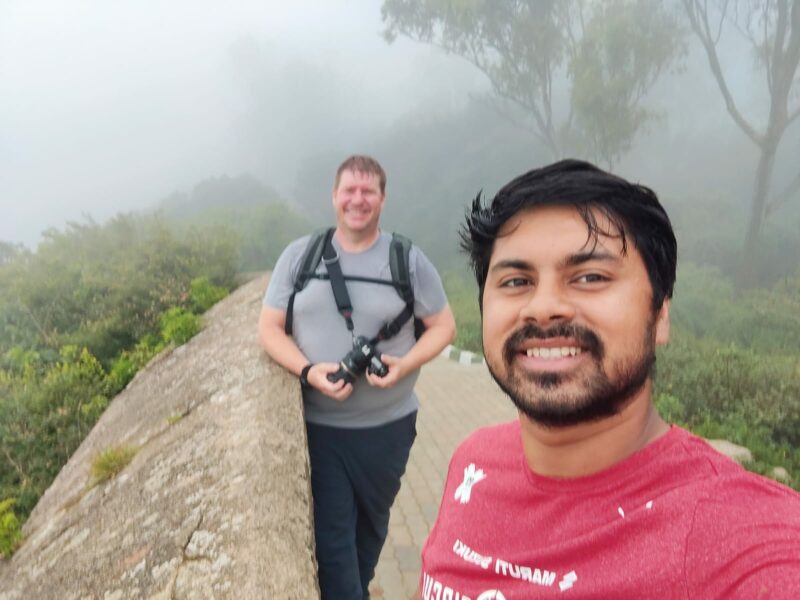
Christopher and Abhik ended the field week on a (literal) high, completing an early morning trek in the misty Nandi hills of Chikkaballapur. As the pilot stage ended and the MSD Fellows left India, the work to polish the survey began. 10 enumerators have now initiated the main stage of the study to collect data on household air pollution using the survey questionnaire, air quality monitors, and peak flow meters. The analysis of the collected data will help us better understand how indoor air pollution affects the lives and health of women in the region.
* A taluk is a sub-district administrative unit comprising of several villages.
** Peak flow meters measure how fast air comes out of an individual’s lungs when they forcefully exhale, as a representation of one’s respiratory or lung health.
Edited by Samantha Serrano

